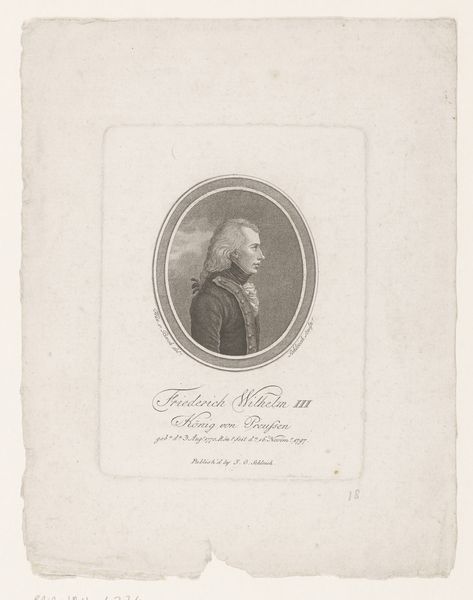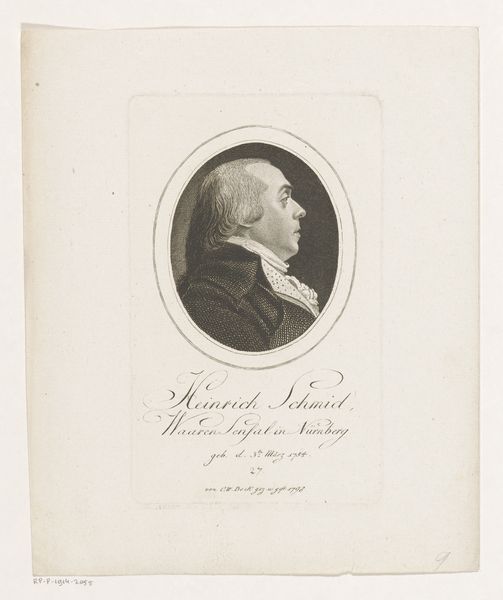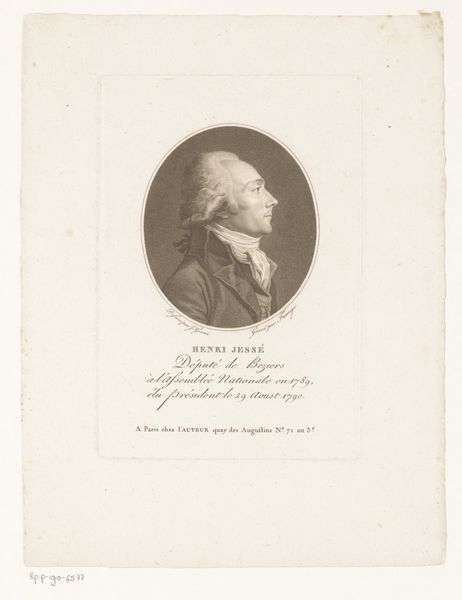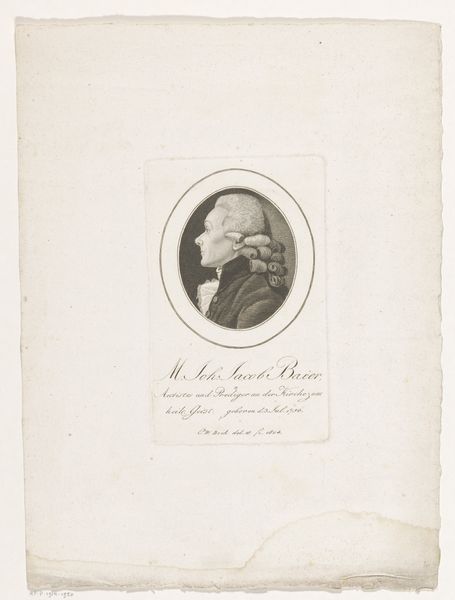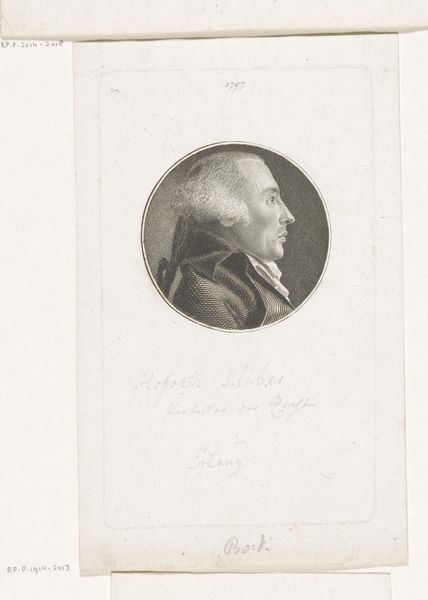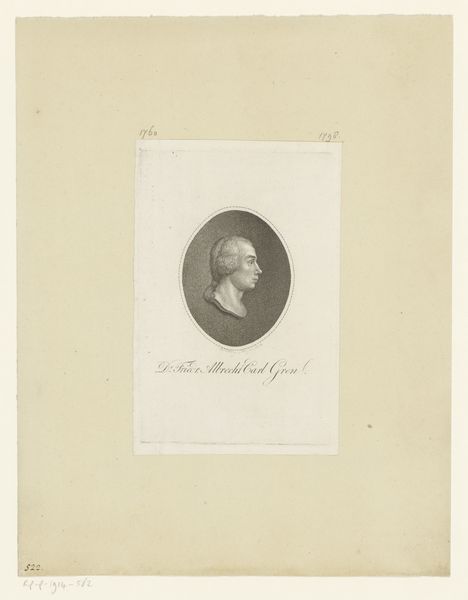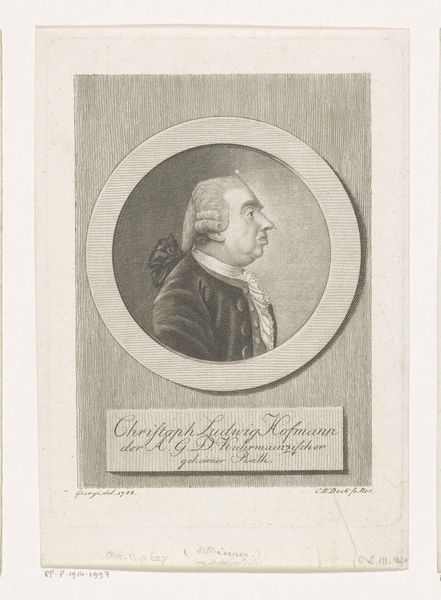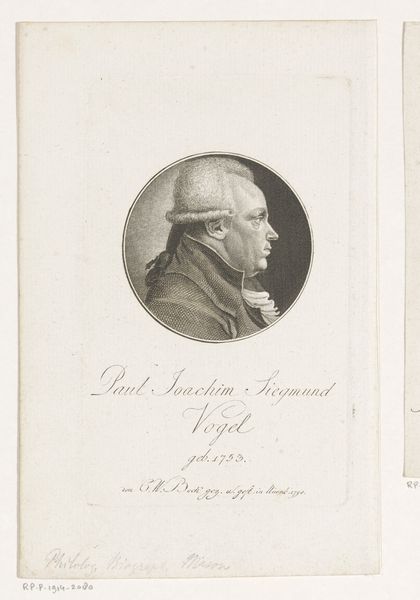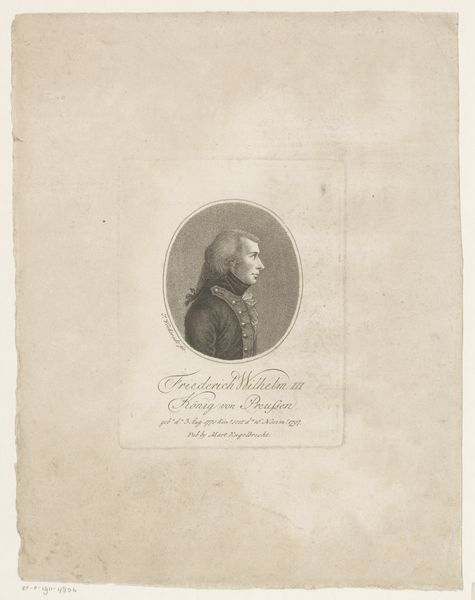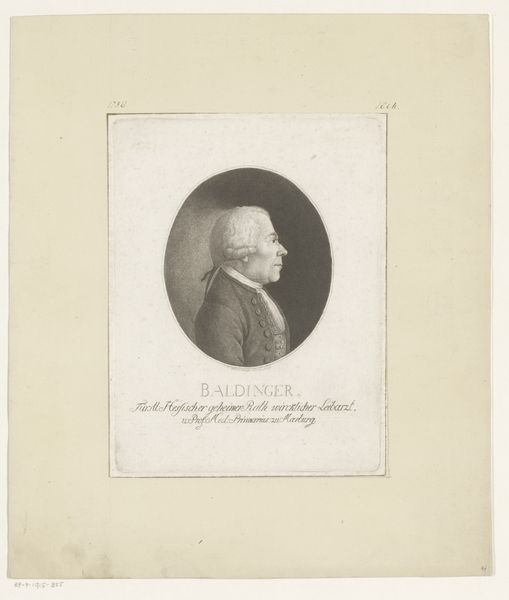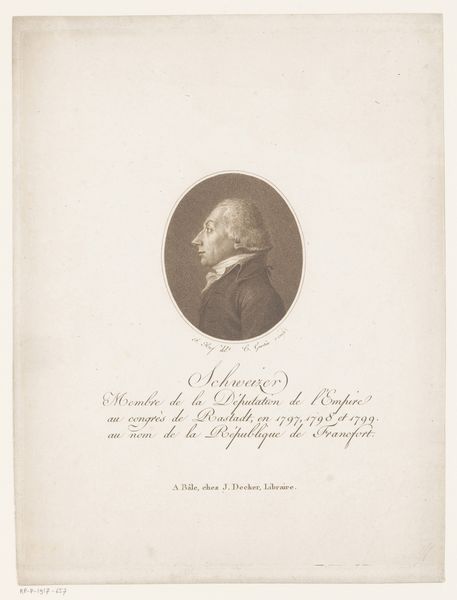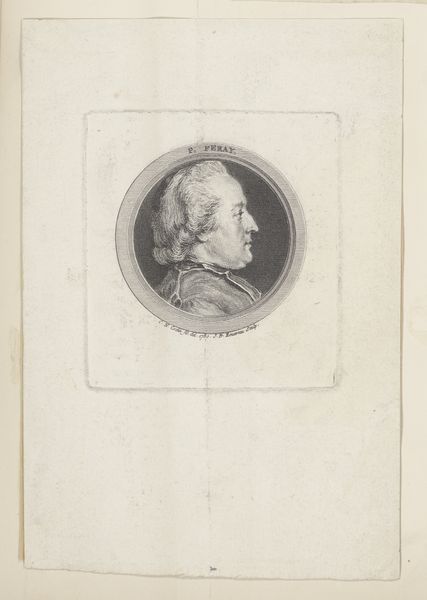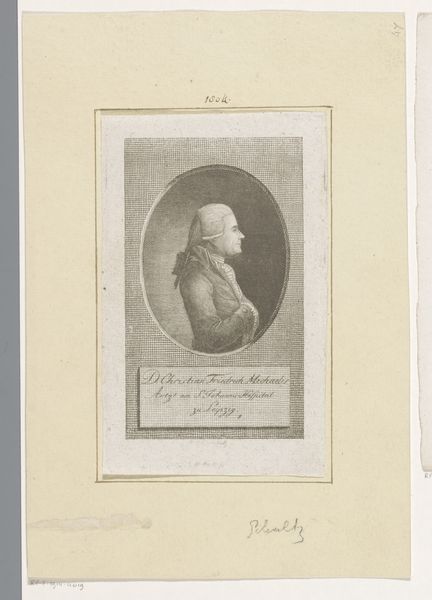
print, engraving
#
portrait
# print
#
engraving
Dimensions: height 163 mm, width 102 mm
Copyright: Rijks Museum: Open Domain
Curator: Looking at this image, my immediate reaction is a sense of poised constraint. There’s a formality about the portrait—it feels both delicate and undeniably deliberate in its depiction. Editor: Indeed. Here we have a print by Christoph-Wilhelm Bock, completed in 1798, titled "Portret van Georg Wolfgang Augustin Fikenscher." The Rijksmuseum holds this work, and it’s rendered as an engraving. The medium, being a print, is significant. It speaks to wider distribution and access during that era. What do you make of it in light of socio-political narratives of the time? Curator: The late 18th century was a crucible of intellectual and social upheaval. This portrait, despite its seeming simplicity, has the power to act as a lens onto these shifting power structures. The man depicted seems educated, professional... perhaps a product of Enlightenment ideals in a changing social world. But there's also that inherent class dimension; it raises questions about the societal expectations imposed and reinforced through visual representations. Editor: And we can read the engraving technique itself as a commentary on those systems. Think of the labor involved, the tools employed, and how prints disseminated knowledge and ideals across different social strata. Engraving wasn’t necessarily about singular artistic genius but collective production, influencing ideas of ownership and accessibility in art. Curator: Exactly. This work exists at the nexus of artistic creation and broad socio-economic forces. Furthermore, how does the subject of this work, Fikenscher, connect with those emerging power dynamics, particularly in the sphere of class or knowledge? We could interpret his stern expression and attire as signaling the expectations or ideals surrounding bourgeois masculinity. Editor: Considering this as print, do you think that access reshaped how it became implicated in social dynamics—the democratization of the image? Curator: Precisely. We’ve touched on this question already, haven’t we? This portrait of Georg Fikenscher provides us with a case study through which to analyze complex interactions that shaped personhood in late 18th-century Europe. Editor: Right, a material reflection on a world on the brink of transformation. Thank you for the additional insights, looking at the labor behind image production in tandem with how images shaped society provides an alternative and fascinating insight here.
Comments
No comments
Be the first to comment and join the conversation on the ultimate creative platform.
